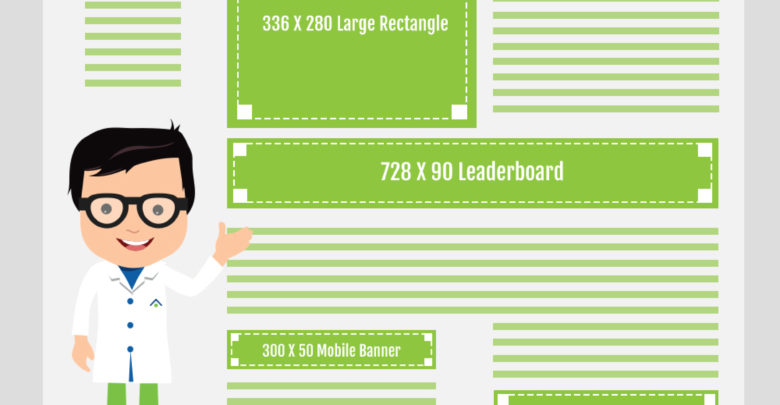
Many advertisers aim to target internet users when they’re logging on to make a purchase of some sort. It’s believed that people are more likely to keep an open mind about products and services when they’re in ‘shopping mode’, and therefore in a better position to spend.
Google Display Ads, however, go against this popular notion in that they aim to reach people while they’re going about their daily online activities. The visual banners and box ads you see on advertising-supported websites are in plain view as internet users engage in mundane tasks. Google Display Ads reach potential customers while they’re reading blogs, clicking through YouTube videos or simply checking their morning emails. The end result? Marketers are able to gain thousands of new impressions in a relatively short period of time. And if the ads are executed effectively, many of those impressions will likely convert to sales.
The Necessity of Correct Ad Dimensions
When launching a Google campaign initiative, many marketers are concerned with the aesthetics of their ad design. Although colour schemes and suitable fonts are important, working with the correct ad dimensions is key. The right dimensions will not only enhance your ad design, but they will also convert better on the Google Display Network. Depending on which size you choose, the way in which you present your information will differ.
The ‘Portrait’, for example, is a brand-centric format. It does well when placed non-intrusively alongside content on the left or right side of the webpage. It is perfect for advertisers who want enough space to create rich, engaging content. On the other hand, the ‘Large Leaderboard’ is well-suited for HD materials such as animations, videos and other applications. And then of course, there are times when the simple 250×250 ‘Square’ is adequate to display simple text and images.
Just knowing these dimensions, however, is not enough to leverage the power of Google Display Ads. A visual guide is often necessary to understand where these ads are located on a typical webpage. Whether your ad will appear at the bottom of a blog article or alongside a list of YouTube videos, you’ll have to tailor your content accordingly to ensure maximum appeal.
Everything you need to know at a glance
Google has very specific guidelines for each ad dimension available. From maximum file size to accepted file formats, it’s crucial for marketing professionals to follow these rules. Not only will you risk displaying skewed content, but Google may penalize your campaign for not staying well within the parameters. The attached infographic is not only a visual guide but also a tip sheet on key rules you should keep in mind during the planning stages.
Google Display Ads can help you get more conversions by finding high-performing audiences using automated targeting. By automatically improving over time, you’re allowing Google’s powerful targeting abilities to learn which audiences work for you. The success of this process, however, lies in your foundation. And a strong foundation begins with the right Google ad dimensions.
Our infographic can help marketing professionals familiarize themselves with the visual characteristics of each ad size. Our guide can also help them understand which file formats will work, and which ones won’t. By knowing these various limitations beforehand, advertisers will be able to avoid a lot of wasted effort in the long run. Although ad dimensions may seem like a minor detail, these specifications will position your marketing initiative for great success.
Infographic credits: TechWyse Internet Marketing




